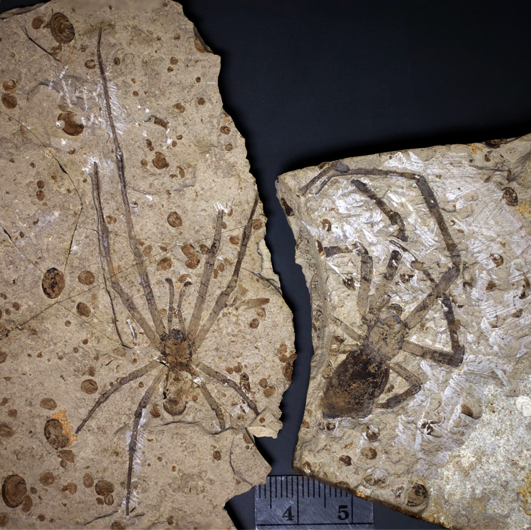
Photo by Paul Selden
Last week on Fossil Friday, I wove you a web of mystery...two spiders (a lady and a gentleman), only recently correctly identified. Who were these spindly spiders? Where were they from? In what time period did they live?
There were many answers, but not a single person got it correct. One of our commenters said it all: "Captain, I'm a doctor, not a invertebrate paleontologist!"
So what was it? I'll let the University of Kansas paleontologist and Director of the Paleontological Institute, Paul Selden, explain:
"The original female (on the right) was described in 2011 as Nephila jurassica, and placed in the modern genus of golden orb-weavers (Nephila). This seemed somewhat surprising, that a modern genus would extend back some 165 million years, but the features all pointed to that conclusion. However, a few months later, the male specimen (left) was discovered in the same beds. It has the same morphology as the female (except it is male), and is as large as her. Nearly all male spiders today are smaller than the female, almost never larger.
Since no bigger specimen has ever come out of the beds at Daohugou, China, I concluded that this must be the male. Moreover, new features, which could not be seen on the female, suggested that this species was not, in fact, a Nephila, but a more primitive spider, possibly a basal orb weaver. Happily, this concurred with a molecular study that was carried out by my colleagues in the middle of last year.
So the species has now been transferred to its own genus and family: Mongolarachne jurassica, in the new family Mongolarachnidae."
You can read all about it in the journal, Naturwissenschaften, here.

